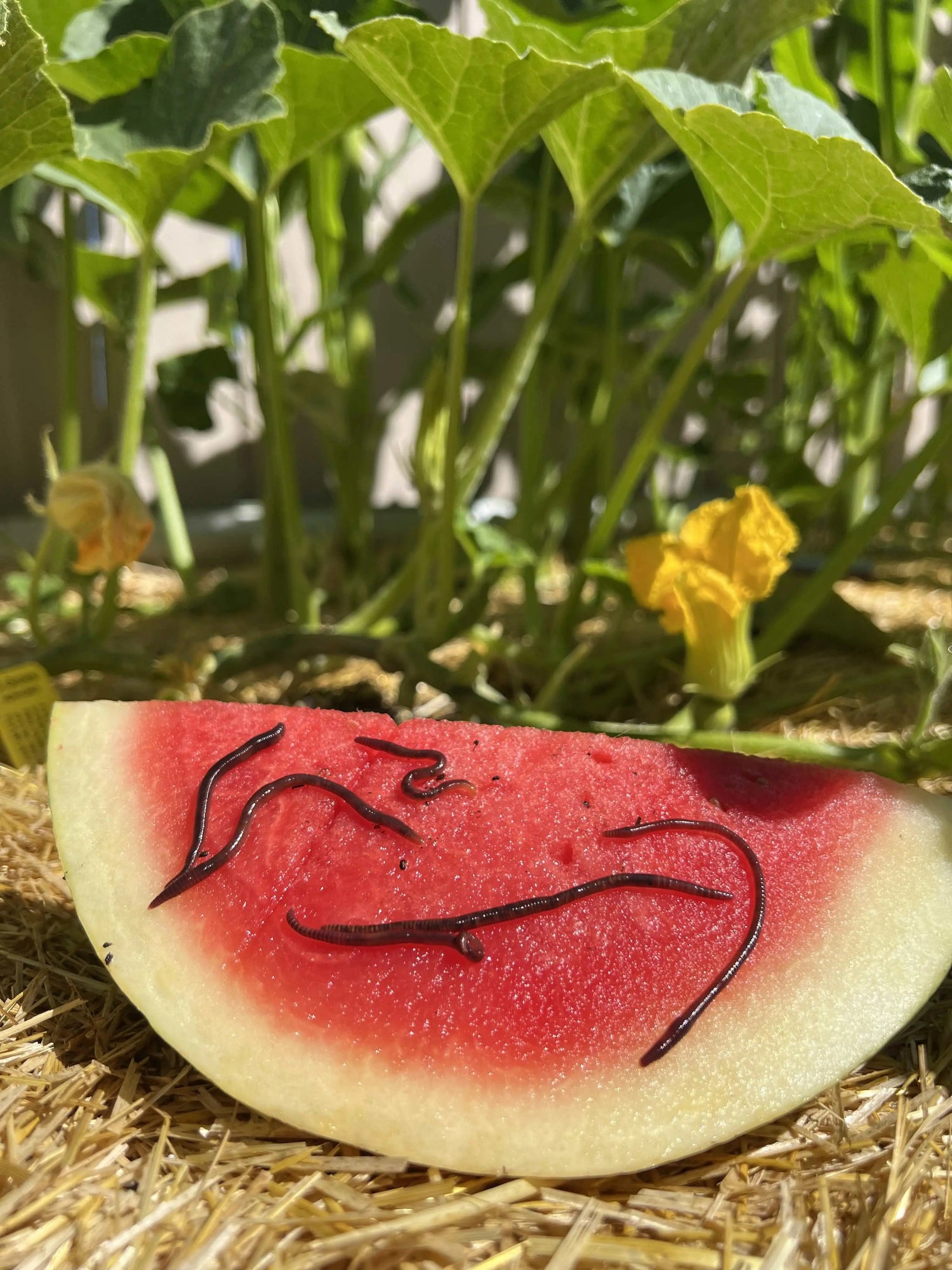Red Wigglers are the best worm for vermicomposting, while nightcrawlers are better for soil aeration.
Red Wigglers stay near the surface and process food scraps quickly, making them ideal for worm bins.
Nightcrawlers burrow deep and improve soil structure but are inefficient in enclosed compost systems.
The best worm depends on your goal: compost production → Red Wigglers; soil structure & aeration → Nightcrawlers.
Hi, I’m Samantha — but most people call me Meme 👋
I raise composting worms every single day in real worm bins and large-scale production systems. I also run a commercial worm farm producing and shipping Red Wigglers and European Nightcrawlers nationwide.
And I’ll be honest — I’ve killed more worms than most beginners will ever own. That’s exactly how I learned this truth:
The right worm for the job makes all the difference.
This guide breaks down Red Wigglers vs Nightcrawlers in simple, real-world terms so you can choose the right worm the first time — without wasting money or losing worms.
📌 Table of Contents
-
What Are Red Wigglers?
-
What Are Nightcrawlers?
-
Red Wigglers vs Nightcrawlers: Quick Comparison
-
Best Use Cases
-
Worm Bin Performance
-
Garden Soil Benefits
-
Common Beginner Mistake
-
Choosing the Right Worm for You
-
Recommended Worms & Supplies
-
FAQs
What Are Red Wigglers?
Red Wigglers (Eisenia fetida) are surface-dwelling compost worms that thrive in organic material like food scraps and bedding. They are the #1 choice for vermicomposting and the worm I rely on daily in my bins.
Why Red Wigglers work so well:
-
They stay near the surface where food is added
-
They eat organic scraps fast
-
They reproduce quickly
-
They tolerate beginner mistakes better than most worms
-
They produce large amounts of nutrient-rich castings
If you’re composting kitchen scraps in a worm bin, Red Wigglers are almost always the smartest choice.
➡️ Know more :
Red Wigglers Composting Guide
Vermicomposting Basics
What Are Nightcrawlers?
“Nightcrawlers” is a broad term for larger earthworms that prefer deep soil, not surface organic matter.
Common types include:
-
Canadian Nightcrawlers
-
European Nightcrawlers
-
African Nightcrawlers
Most confusion comes from lumping all nightcrawlers together — even though they behave very differently in bins and soil.
In general, nightcrawlers:
-
Burrow deep
-
Improve soil structure
-
Create channels for water and roots
-
Perform poorly in shallow worm bins
They shine in gardens, not compost bins.
Must Read : Types of Nightcrawler Worms Explained
Red Wigglers vs Nightcrawlers — Quick Comparison
|
Feature |
Red Wigglers |
Nightcrawlers |
|
Best for Vermicomposting |
⭐⭐⭐⭐⭐ |
⭐⭐ |
|
Soil Aeration |
⭐⭐ |
⭐⭐⭐⭐⭐ |
|
Surface Feeding |
⭐⭐⭐⭐⭐ |
⭐⭐ |
|
Deep Burrowing |
⭐⭐ |
⭐⭐⭐⭐⭐ |
|
Reproduction Speed |
Fast |
Slower |
|
Average Size |
1.5–3 inches |
4–10+ inches |
|
Ideal Habitat |
Worm bins |
Garden soil |
Best Use Cases
Red Wigglers — Best for Vermicomposting
Red Wigglers stay where the food is and process scraps quickly, making them perfect for worm bins.
Great for:
-
Indoor & outdoor worm bins
-
Kitchen scrap recycling
-
Fast compost production
-
Beginners learning vermicomposting
Nightcrawlers — Best for Gardens & Soil Health
Nightcrawlers work deep in the soil, improving structure rather than composting efficiency.
Great for:
-
Vegetable gardens
-
Lawns and landscape beds
-
Soil aeration and drainage
Worm Bin Performance — What to Expect
Red Wigglers
-
Stay near food scraps
-
Eat organic matter quickly
-
Reproduce reliably in bins
-
Perform well year-round
Nightcrawlers
-
Burrow away from surface food
-
Eat less in enclosed systems
-
Struggle in shallow bins
-
Perform best in open soil
📌 If your goal is vermicomposting efficiency, Red Wigglers consistently outperform nightcrawlers.
Garden Soil Benefits
Red Wigglers
-
Produce nutrient-rich castings
-
Improve topsoil quality
-
Feed beneficial microbes
Nightcrawlers
-
Create deep soil channels
-
Improve water penetration
-
Help roots access oxygen
Common Beginner Mistake When Choosing Worms
Many beginners choose nightcrawlers for worm bins because they’re bigger.
I made the same mistake early on — and it failed.
Size doesn’t matter in composting. Behavior does.
Worms that stay near the surface will always outperform deep burrowers in a bin.
Choosing the Right Worm for You
Ask yourself:
-
Composting kitchen scraps in a bin? → Choose Red Wigglers
-
Improving garden soil structure? → Choose Nightcrawlers
-
Want both results? → Use Red Wigglers in bins and Nightcrawlers in garden beds
Recommended Worms & Supplies
If you want to succeed faster, these are what I use and recommend:
Worms
-
Purebred Red Wigglers — Best for composting
-
European Nightcrawlers — Great for soil and bait
Supplies
-
VermiFusion Bedding — Balances moisture and reduces odors
-
EcoFluff Bedding — Premium worm-safe bedding
- Worm Bin Starter Kit — Everything you need to start correctly




Leave a comment
All comments are moderated before being published.
This site is protected by hCaptcha and the hCaptcha Privacy Policy and Terms of Service apply.